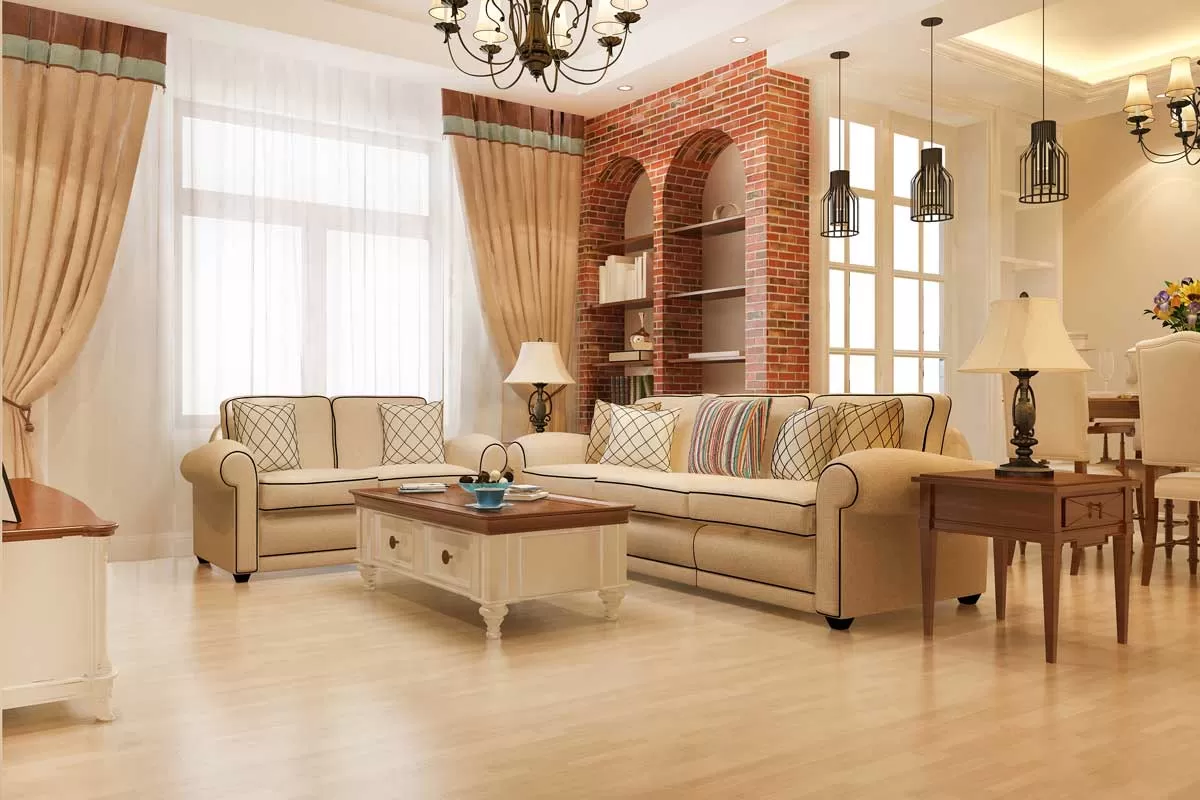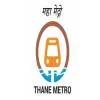Smart homes have become a buzzword. But when CW asked developers for specifics of their smart homes, we either drew a blank or got a standard answer: “We don’t do enough in smart homes and have nothing to share.”
Brands, however, were quick to attest to the use of their products in residential real estate.
Pushkar Gokhale, EVP and Business Head of Godrej Security Solutions, Business of Godrej
& Boyce, part of the Godrej Enterprise Group, tells CW that around 144 developers have used their solutions and around 36,550 video door phones have been installed in the past three years.
Schneider Electric informs CW that it works with the top 300 builders in the country and its existing Wiser home automation system (1.0) has been well received by builders and homeowners alike. “We have seen demand for home automation in not just metros but also Tier 2 cities and in all types of residences, including apartments, villas, condos, etc,” says Sumati Sahgal, Vice President - Retail.
“We are working with leading developers and brands across India, Delhi, Mumbai, Bengaluru, Kolkata, Chennai, Chandigarh, Ahmedabad, Pune, Kochi, etc,” shares Girish K Chawla, Head of Professional Business - Signify, Greater India.
“Our digital locks have been used in various residential projects like Purvankara projects in Bengaluru, Lodha Palava in Mumbai and Muppa Projects developments in Hyderabad,” says Shyam Motwani, Business Head, Locks and Architectural Fittings and Systems, Godrej & Boyce, part of Godrej Enterprises Group.
Villas for high-net-worth individuals spanning 28,000 sq ft, have been completely automated with Havells’ Crabtree Solution. The automation covered gate control, lighting, HVAC, shading, home theatre, multizone audio and staircase sensors. When the gate opens, the parking lights turn on for 30 seconds; thereafter, the façade light turns on for 15 seconds. In a complex of premium apartments, Havells’s wired solution has been used to automate piped music, motorised curtains, lighting, HVAC and energy-saving sensors.
Amitabh Kumar, Engagement Manager at Redseer Strategy Consultants, and author of Unlocking Convenience: The Indian Smart Home Revolution, a new report, has valued the smart home technology market at around
Rs.80 billion as of 2023 and expects it to touch `360 billion by 2028 on the back of evolving customer needs and rising awareness, increasing reliability of technology and growing affordability.
While the smart home market is attracting players from both the Indian and international segments such as Havells, HikVision and Godrej, new players such as Qubo, Urban Company and Atomberg are taking the lead with their innovative technology and digital-first strategy, he says.
Clearly, a lot is happening. But the industry still has far to go.
Drivers and obstacles
Kumar estimates the penetration rate of connected home devices in India as being below 10 per cent. Why are smart homes not yet the in-thing?
He attributes this to a clash of high upfront costs of smart home technology with India’s cost-sensitive market. “Developers, primarily focused on construction rather than technology, often lack the necessary expertise for smart home installations,” he says. “While homebuyer interest is growing, it has yet to reach a level that compels widespread developer adoption.”
Kumar also calls out lack of standardisation, with various incompatible systems, which makes integration complex and costly.
Thus far, smart homes, conceptually and as a market, appear to be driven by individual users, attracted by “an increasing sensitivity that ‘doing one’s bit’ on an individual scale, in environmental sustainability, does matter,” says CN Raghavendran, Director (Emeritus), CR Narayana Rao (Consultants). “This individual push positively contributes to the collective initiatives of all stakeholders engaged in protecting the planet. And smart homes help reduce a carbon footprint, especially smart homes that use devices with AI. AI records usage habits and replicates daily
usage patterns week by week,
which adds to the user’s convenience and increases
energy savings.”
A new middle-class with
growing aspirations backed by purchasing powers are propelling a transformative lifestyle, resonating comfort and convenience,
continues Raghavendran. “They recognise the value that smartness brings to a property.”
On the supply side, Raghavendran points out that developments have brought enabling technologies like IoT and communication protocols into the reach of a common person.
What’s hot?
Incorporating smart home technology is essential to
provide residents a sophisticated living experience, according to Viswa Prathap Desu, Chief Operating Officer, Residential, Brigade Group. “Homes in our tower projects such as Ivory and Goldspire at Brigade Orchards feature advanced home automation systems that control lighting, temperature (air-quality sensors) and security (video door phones, smart locks and integrated security cameras). Voice assistants like Amazon Alexa provide seamless control, while smart appliances, energy-efficient fixtures and advanced security systems enhance convenience and comfort.”
Among real-estate developers and individual clients who have bitten the smart home bullet, Karan Kumar, Director, Doch Smart Home, attests to seeing a clear preference for hybrid technologies.
“Hybrid technologies offer
the flexibility to seamlessly
automate both non-smart existing home appliances and smart-enabled products into a unified ecosystem without requiring changes to traditional electrical wiring,” he explains.
Kumar says hybrid technology is also a preferred choice at Doch because it combines several wireless and wired technologies, all of which are approved by worldwide standards defining the interoperability and compatibility of products, thus ensuring reliability, compatibility and ease of use.
As examples, he points out that DSR Fortune One in Hyderabad used a hybrid system combining Zigbee, Z-Wave and Wi-Fi to automate lighting, climate control and security systems. Residents can control these functions seamlessly through a single app without any need for rewiring. And the Botanika in Hyderabad has integrated Zigbee technology to enable smart lighting, advanced security and energy-efficient management systems, providing a cohesive smart home experience. In both these projects, Doch was the principal smart solutions partner and Kumar’s
team got involved at the time of planning, working with the developer to optimise the investment in smart technologies.
“Customers are increasingly looking for products that combine functionality with elegance, ensuring that homes are not only secure but aligned with the aesthetics they aspire to,” adds Gokhale.
Convenience redefined
Brands at the forefront of the smart home market are bringing out products that ensure user convenience and, hence, can be controlled in multiple ways. Or, are easy to install. Or, can smarten non-smart devices.
For example, “Signify’s Philips Smart Wi-Fi ecosystem is a plug-and-play solution for consumers seeking effortless smart lighting control,” says Chawla. “It includes smart bulbs and light strips that connect directly to a home
Wi-Fi network and can be personalised through the intuitive WiZ app. Further, smart luminaires can be controlled through the
WiZ app or by voice via popular platforms like Amazon Alexa
and Google Assistant, or even traditional switches.”
Havells’s Crabtree Automation Solution provides seamless control over lighting, HVAC systems, curtains, audio-video equipment and security devices through elegant panels or mobile apps, ensuring convenience, security and energy-efficiency. Its wireless variant, Havells Crabtree Wireless Home Automation Solutions, includes the Signia Smart Modular Wi-Fi Solution and the ISense Uniblock Wireless Solution, retrofit modular smart switch automation systems designed for both new and existing homes, accessed through mobile apps, touch or voice commands.
Godrej’s residential keyless digital locks support multiple access options like fingerprint, RFID, keypad, mobile NFC with Bluetooth Low Energy (BLE) technology and random number ‘spy’ codes for password protection.
Godrej Security Solution’s latest range of NX Pro Plus home lockers provide digital and biometric locking mechanisms, ensuring flexible and secure access options
to users. The NX Advanced
range of home lockers have a triple locking mechanism that allows family members of different generations to access the home locker as per their convenience.
“Schneider Electric’s Wiser 2.0 has been developed to convert homes without the need for intensive re-wiring,” says Sahgal. “So, it
can transform any new or existing home into a smart home in less than five hours.”
Wiser 2.0 smart home solution is Schneider Electric’s latest offering. “Through Wiser 2.0, we provide a seamless experience to homeowners through the Wiser App and voice command capabilities, thereby integrating digitalisation and automation into everyday living,” she says. “The solution provides energy management features to promote responsible living.”
“Signify’s WiZ Connected smart plugs can transform ordinary appliances into smart devices to be controlled and monitored remotely,” adds Chawla.
Standardisation woes
Apps ensure user-friendly control and management of all smart home features, observes Kumar. However, it helps for an app to cover various products and brands. In that context, it’s important to choose hybrid technologies that are brand-agnostic, allowing for their integration into a solo app-driven ecosystem without compatibility issues.
For instance, Havells’s products are compatible with mobile apps, allowing users to remotely control and monitor devices, enhancing convenience and accessibility. “Cloud connectivity enables seamless integration with other Havells devices, creating a unified ecosystem that improves user experience and functionality,” says Vivek Yadav, Executive Vice President, Havells India.
Atomberg, a leader in the
fast moving electrical goods (FMEG) space, offering smart ceiling fans and smart locks, has recently released its Public API for its smart fans, which enables the fans to be controlled through popular home automation platforms like Home Assistant or Home Bridge.
“We have opened up our API for free so that users/developers/home automation companies can use it and freely integrate our fans in their home automation applications,” explains Arindam Paul, Chief Business Officer, Atomberg. “Several users have already used this API and they have created routines involving our smart fans and their existing devices. We are currently more focused on providing better features for our products on the application; the ability to control other devices using our applications is in the works.”
However, Atomberg has a different policy for its smart locks. “We feel that smart locks are one of the most essential security appliance in a home; hence to control smart locks, we trust our own application,” he adds.
Atomberg’s smart locks SL1 and Azhero have Bluetooth connectivity, and features like onetime access, battery indicator, etc. Apart from the application, these locks can be operated by fingerprint, NFC, keypad and mechanical keys.
Good tidings
Home devices have
transitioned from ‘conventionality’ to ‘connectivity’, becoming
smarter with time, and they will eventually progress to ‘comfort’, predicts Kumar.
While he pinpoints home entertainment (TV, speakers, etc) as leading the adoption, followed at a distant second by smart security (camera, video doorbell, door lock), he expects the next wave of growth to come from the adoption of smart security, smart lighting and control (lights, switches and plugs), and small appliances (air cooler, humidifier, heater, etc).
To overcome the obstacles to greater adoption, Kumar advocates a multifaceted approach. “Government support through financial incentives, clear regulations and public awareness campaigns can drive adoption,” he says. “Cost reduction can be achieved through standardised, affordable solutions and collaborations. Effective marketing, consumer education, and attractive financing options can boost consumer demand. Highlighting the long-term value proposition, such as increased property value, energy efficiency and enhanced security, can further incentivise new-age home buyers and eventually cascade to developers.”
Cheers to that!





















